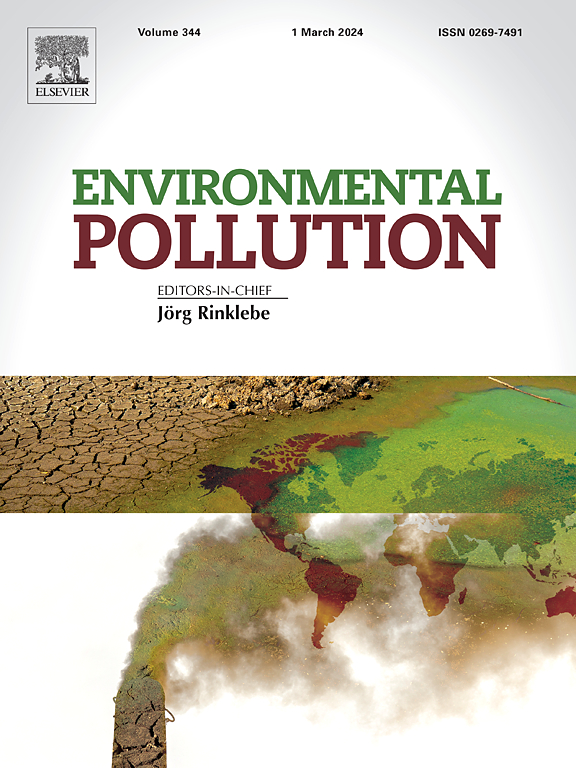使用量子级联激光探测器对汽油车和混合动力车催化剂后氨气排放进行路面测量
IF 7.6
2区 环境科学与生态学
Q1 ENVIRONMENTAL SCIENCES
引用次数: 0
摘要
汽油车排放的氨已被证实是城市二次气溶胶的重要前体。为了更全面地了解氨的形成机制并更好地控制与车辆有关的氨,本文使用最先进的量子级联激光分析仪测量了 6 辆传统车辆和 4 辆混合动力车辆在城市、农村和高速公路上的路面氨排放。测试车辆的氨气排放量为 0.01 至 4.27 mg/km,车队平均排放量为 1.04 mg/km。与之前的实验室测试相比,本次研究的结果偏低,这是因为车辆的排放标准较高,而且在农村地区行驶时排放接近零。大多数测试车辆在发动机预热时氨气排放量较高,一些车辆在高速公路动态行驶时氨气排放量也达到峰值。混合动力汽车的氨气排放量平均比传统候选车辆少 60.7%。研究证实,氨是在热催化剂上出现不完全氧化产物时形成的。发动机预热、高速公路动态行驶、微粒过滤器再生和混合动力发动机重新启动可能是重要的来源。据推测,上游催化剂上形成的氨可在催化剂温度适中时被下游催化剂消耗掉,从而使农村驾驶时的氨排放接近零。本文章由计算机程序翻译,如有差异,请以英文原文为准。


On-road measurement of post-catalyst ammonia emissions from gasoline and hybrid vehicles using quantum cascade laser detector
Ammonia emissions from gasoline vehicles have been confirmed an essential precursor of urban secondary aerosols. To more comprehensively understand the formation mechanisms and better control vehicle-related ammonia, this paper measured the on-road ammonia emissions from six conventional and four hybrid vehicles using a state-of-the-art Quantum Cascade Laser analyzer on urban, rural, and highway routes. The test vehicles emitted 0.01–4.27 mg/km of ammonia emissions, with a fleet average of 1.04 mg/km. Compared to the previous laboratory tests, the results of this study were low because of the high emission standards of the vehicles and the near-zero emissions during rural driving. Most test vehicles showed high ammonia emissions during engine warm-up, while some vehicles also had ammonia peaks during dynamic highway driving. On average, hybrid vehicles emitted 60.7% less ammonia emissions than the conventional candidates. It is confirmed that ammonia was formed when incomplete oxidation products presented on a warm catalyst. Engine warm-up, dynamic highway driving, particulate filter regeneration, and hybrid engine re-starting could be important sources. It is hypothesized that the ammonia formed on the upstream catalyst could be consumed by the downstream catalyst at moderate catalyst temperature, resulting in the near-zero ammonia emissions during rural driving.
求助全文
通过发布文献求助,成功后即可免费获取论文全文。
去求助
来源期刊

Environmental Pollution
环境科学-环境科学
CiteScore
16.00
自引率
6.70%
发文量
2082
审稿时长
2.9 months
期刊介绍:
Environmental Pollution is an international peer-reviewed journal that publishes high-quality research papers and review articles covering all aspects of environmental pollution and its impacts on ecosystems and human health.
Subject areas include, but are not limited to:
• Sources and occurrences of pollutants that are clearly defined and measured in environmental compartments, food and food-related items, and human bodies;
• Interlinks between contaminant exposure and biological, ecological, and human health effects, including those of climate change;
• Contaminants of emerging concerns (including but not limited to antibiotic resistant microorganisms or genes, microplastics/nanoplastics, electronic wastes, light, and noise) and/or their biological, ecological, or human health effects;
• Laboratory and field studies on the remediation/mitigation of environmental pollution via new techniques and with clear links to biological, ecological, or human health effects;
• Modeling of pollution processes, patterns, or trends that is of clear environmental and/or human health interest;
• New techniques that measure and examine environmental occurrences, transport, behavior, and effects of pollutants within the environment or the laboratory, provided that they can be clearly used to address problems within regional or global environmental compartments.
 求助内容:
求助内容: 应助结果提醒方式:
应助结果提醒方式:


